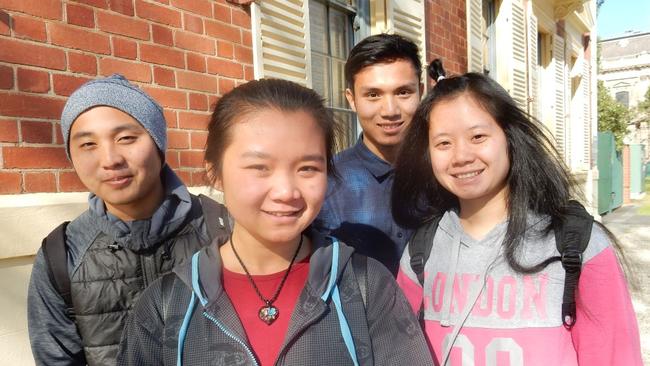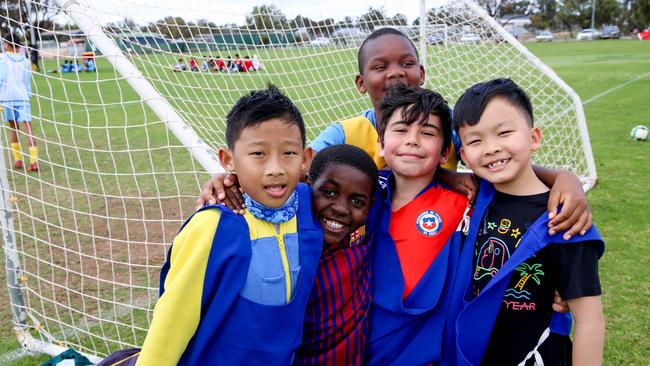Refugees enriching the regions
A constellation of migrant communities established in regional Victoria to solve worker shortages have brought a wealth of riches to their new shores.
New life is growing in black soil country, as refugees fleeing warzones and persecution find sanctuary in Victorian bush communities.
The new wave of migrants are driven by a chronic labour shortage, with towns across the state’s west and north proactively encouraging refugee and humanitarian settlement programs to join their communities.
The indelible benefit for the regions is they are not trekking the same old road and plugging labour gaps for short periods with temporary overseas workforces, but attracting new permanent Australian residents looking to begin new lives.
The migrants themselves are attracted by housing, lifestyle, employment and educational opportunities. And delivering cultural, social and socio-economic riches and helping to ensure schools, health and community services remain viable.
NEW ARRIVALS
Since 2020, Mildura Council, under a push to bring in refugees from war-torn nations, have welcomed 40 Afghan, Congolese and Syrian families.
As with elsewhere, the breadwinners start and mostly stay working in agriculture, on farms and in orchards and nurseries or in processing primary products.
There are growing communities of Afghans in Swan Hill and Shepparton, Burundians and Tibetans in Mildura, Congolese in Warrnambool and Somalians and South Sudanese in Ballarat. Elsewhere, African families have recently been settled in Ararat and Stawell.
The latest shire planning to introduce migrants to fill critical roles is Maryborough.
Central Goldfields Shire Mayor Chris Meddows-Taylor said town officials were currently speaking with migrants from a range of nations to match skills and fill vacant positions “our community wants, needs and values.”
“But this project is not only about filling jobs, we have ensured we have the housing and support services in place first to make this work for the long-term, it is about the Shire becoming more culturally diverse,” he said.
“The message for us all is that we cannot just sit on our backsides.”
FIRST SETTLER
The growing constellation of regional Victorian settlements can be traced back to 2009 when John Millington OAM hired five Karen-Burmese people who had been placed in Werribee, in Melbourne’s west, to staff the rapidly growing poultry processing company, Luv-A-Duck, he managed in Nhill.

A gentle, agrarian people, the Karen have since planted deep roots in the Wimmera grain and fowl farming community.
The five has become 260 people, or over 10 per cent of the town’s population of about 2200, who work in at least 27 local businesses and community, health and education centres, some are employers.
In fact, a 2020 report by peak migrant settlement service AMES found the Nhill migration had added $105 million to the local economy in its first decade and 156 full-time-equivalent jobs.
But this is not just about dollars and cents, it is also a tale of survival.
CAMP TO CARE
Tha Blay Sher moved to Nhill in 2009 as a teenager, her father one of the first employees, and is one of about 50 Karen who have purchased homes in Hindmarsh Shire.
A recent university graduate, she uses her social science degree to assist newly-arrived Karen navigate the health care system. Most have come from the same Mae La Thai-Burma border refugee camps where she lived for six years from age eight.
All fleeing Myanmar army persecution that includes enslavement and destruction of homes, hospitals and crops.

“All of my childhood memories are from in the camps, how we slept on a dirt floor and lived in crowded conditions,” she said.
“(But) if my parents didn’t cross the border, I am not sure I would be alive today. It has been amazing to watch the community grow”.
Nhill is likely Australia’s most successful settlement program since the Snowy Hydro scheme delivered 70,000 migrants over 25 years from 1949 to regional NSW.
WORD OF MOUTH
AMES also recently reported that a similar Karen program in Bendigo has generated 177 jobs and $67 million.
Mr Millington said that community began after a Bendigo processing manager visiting Nhill saw what the Karen had provided.
“We never envisioned anything like this. It is word of mouth and country people talking to country people,” he said.
“There are still thousands of Karen in camps and being persecuted and the Karen here want to help them out of that situation. They are now coming from the camps to Tullamarine (airport) to Nhill with their entire lives in a small bag.”
AMES CEO Cath Scarth said communities the organisation had worked with believed migrants created more interesting and welcoming places.
“For many (migrants) who have come from non-urban settings in their home countries, regional Victoria can offer a more familiar way of life than life in a big city,” she said.
Australia allocated 13,750 places to the Refugee and Humanitarian Program for 2022-2023, down from 18,750 places in 2018-19.
Among the class of 2022 are the Fuhol family who sold all they could to move from war-torn Ukraine to Wodonga in August after patriarch Denys accepted a welding job.
The pandemic border closures and local worker shortage fuelled intense competition for semi-skilled workers and labourers.
Cultivating refugee settlements may be a long-term solution to some of the regional Australia’s greatest problems.




